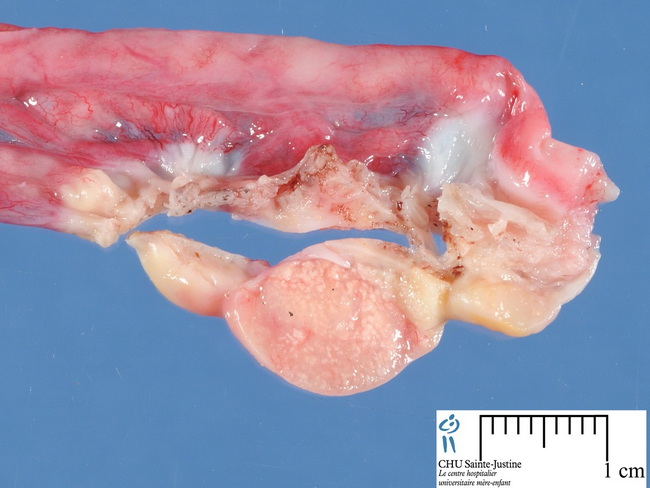Gonadoblastoma : Clinical


Comments:
Clinical Features: Gonadoblastomas are usually discovered in young patients (avg. age 18 years) with dysgenetic gonads which may be indeterminate gonads (60%), streak gonads (20%) or dysgenetic testis (20%). Patients are phenotypic female (80%), phenotypic male (10-20%) or have ambiguous genitalia. Rare cases occur in phenotypically normal females with normal gonads and a normal karyotype. Phenotypic female patients have 46, XY pure gonadal dysgenesis (Swyer syndrome) or mixed gonadal dysgenesis with 45,X0/46, XY mosaicism and features of Turner syndrome. They present with primary or secondary amenorrhea, ambiguous genitalia, and signs of virilization (60%). They have a normal or short vagina and small uterus and cervix with rudimentary fallopian tubes. Phenotypic male patients present in childhood or early adolescence with cryptorchidism (dysgenetic gonad in inguinal or abdominal location), hypospadias, other anomalies of external genitalia and gynecomastia. During surgical exploration, the urologist often discovers persistent female secondary sex organs. Gonadoblastomas are usually asymptomatic and found incidentally on examination of removed dysgenetic gonads. Some cases come to attention when calcifications are noticed on abdominal or pelvic X-rays. A small percentage present with a pelvic mass. About 40% of cases are bilateral. The image shows a small gonadoblastoma arising in dysgenetic gonad. Image courtesy of Dr. Jean-Christophe Fournet, Paris, France; humpath.com; Used with permission.



